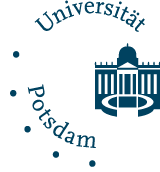to his battles with reform groups, so that according to his interpretation one must be concerned with Torah Prohibitions( at least as one consideration of many in a restrictive invoking of the Sabbath laws mentioned) when applying them to the use of modern technologies on the Sabbath. The same applying to flying in an airplane, automobile, riding a bicycle etc..
-
b. The reliance on the Ramban-" Hatam Sofer" ruling to say that the use of modern transportation means is a transgression of" Shabbaton" Prohibitions is primarily by Ashkenazic halachic authorities, the Oriental halachic authorities, as indicated in our dissertation even though they were aware of the Hatam Sofer's ruling, generally disregarded it, and as a matter of fact permitted the use of transportation vehicles on Sabbath and Yom- tov with certain restrictions, usually those of traversing the" Techum Shabbat". The category of" Ovadin de'chol" is explained by them as referring to lightly restrictive Prohibitions according to the Ran's approach, and not Prohibitions of a Torah nature(" Shevut") as taught by the Ramban.
APPENDICES
A. According to S. Lieberman the Tosefta( Bezah 4, 4) alludes to several other groups of Prohibitions: completed work, partial work," Shevut" that is similar to a Melacha( a category taken from the Rambam's work Halachoth of Sabbath chapter 21!) and a fourth category of Prohibitions, named' Ovadin De'chol". We also reviewed the other commentaries on this unclear Tosefta, pointing out the difficulties with Lieberman's interpretation, and supported Duenner's approach which seemed more acceptable. We remarked that even according to Lieberman's explanation we are not compelled to accept the fact that this fourth category is" Ovadin de'chol".
- XX-
